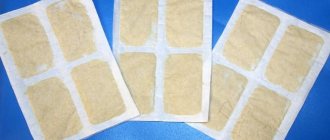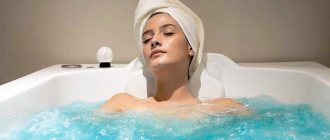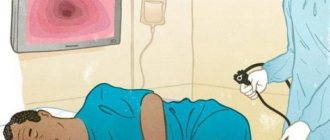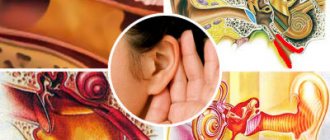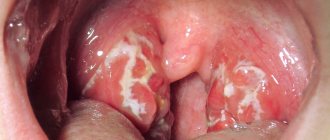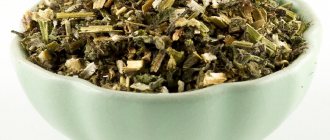23.11.2016
Quantity
Halotherapy
widely used in modern medical practice for the prevention and treatment of diseases of the respiratory system. This method of treatment is carried out without the use of drugs and is included in the list of services of many modern sanatoriums and medical institutions.
Halochamber or caving chamber?
Speleotherapy and helotherapy are a certain type of climatotherapy, that is, without leaving the locality, the patient has the opportunity to improve his health. They pursue the same therapeutic goal, but have some technical differences. Thus, the speleological chamber consists of natural blocks of potassium salts containing KCl, Na, Mg, which are mined in special quarries and caves. Depending on the place of extraction, the concentration of chemical elements may differ slightly.
The halochamber owes its therapeutic effect not to salts, but to the halogenerator, which grinds table salt into an aerosol. It is this aerosol that fills the halochamber. The walls, ceiling and floor of the chamber are treated with a spray of table salt, not for medicinal purposes, but rather to create a pleasant atmosphere. A speleo chamber is preferable from this perspective, since in this case the walls are also treated - the entire room is lined with salt blocks.
The therapeutic effect of speleoclimatotherapy is more effective than halotherapy. But this does not mean that the halochamber is useless. Air saturated with sodium chloride ions helps saturate the blood with oxygen, strengthens the immune system, renews the skin, improves hair structure, wounds and scratches heal much faster, that is, the body’s ability to regenerate increases.
In addition to the main feature of the halo chamber - salty air saturated with ions, a constant level of humidity and air temperature are also maintained in the room, which creates a comfortable microclimate.
A little about the history of halotherapy
Attempts to reproduce the microclimate of salt hospitals (halite, sylvinite) in terrestrial conditions have been made since the mid-80s of the 20th century. As a result, “halochambers” were created - these are rooms with an artificial microclimate, close to the microclimate of natural salt caves, while maintaining and controlling a certain temperature, humidity, aerosol dispersion, and concentration of hydroaeroions.
Clinical observations have shown that a highly dispersed aerosol of rock salt stimulates the protective mechanisms of the respiratory tract, has a mucolytic, bronchodrainage effect, has an anti-inflammatory and immunomodulatory effect, and increases the resistance of the mucous membrane to infection.
Who is prescribed halotherapy?
Halotherapy courses are prescribed to patients with certain problems of the respiratory system:
- diseases of the ear, nose and throat area - pharyngitis, bronchitis, sinusitis, as well as pneumonia;
- colds that worsen 3-4 times a year;
- bronchial asthma;
- cardiovascular disorders (prescribed for recovery after a heart attack, stroke);
- helps normalize blood pressure, that is, halotherapy is indicated for both hypertension and hypotension;
- varicose veins (thin the blood that is too thick);
- nicotine addiction;
- skin problems (psoriasis, dermatitis, eczema, acne);
- bronchial type allergies;
- living in an area with an unfavorable environment or working in a hazardous industry;
Halotherapy is also prescribed for frequent stress, panic attacks, and insomnia.
A visit to the salt room shows amazing results. Thus, patients with asthma or bronchitis note a general improvement in their condition in 76%, with skin diseases - in 92%, exacerbation of allergic reactions to pollen decreases in 89% of patients, constant fatigue syndrome and depressive states go away in 94% of cases. Reviews from doctors confirm these statistics.
Patients with nicotine addiction after just a few procedures notice a slight weakening of the craving for cigarettes, the lungs are cleared of accumulated harmful deposits, inflammation of the lung tissue is relieved, and subsequently an aversion to nicotine appears. The psychological impact on the smoker is also important - the opportunity to breathe clean air and compare it with cigarette smoke. Of course, not all smoking patients quit this bad habit, but their lung condition improves significantly.
The benefits of halotherapy: what does the halochamber treat?
The healing properties of salt grottoes were known back in the Middle Ages. Healers often sent their patients with respiratory diseases to such caves. True, the healing power of speleotherapy was proven only in the 19th century. Scientists noticed the absence of asthma, lung and bronchi diseases in miners who mined salt.
One of the key features of the air in the halochamber is the saturation of oxygen with ions (almost like during a thunderstorm) and the absence of bacteria and viruses.
One session of halotherapy can replace 4 days of staying on the seashore. Visitors to halo chambers already after the first procedure note a decrease in the level of fatigue and an improvement in mood. Several sessions of climatotherapy give the following results:
- Hemoglobin increases;
- Blood circulation improves;
- Immune processes in the body are activated;
- The emotional state stabilizes;
- The bronchi and lungs gradually get rid of bacteria and viruses;
- Hormonal levels return to normal;
- The level of anxiety decreases;
- Increased concentration;
- Blood pressure decreases;
- Metabolism improves.
The patient's recovery occurs without the use of medications or medications, which further increases the value of salt treatment and reduces the number of contraindications.
A course of treatment
The number of procedures and the time of visiting the halo chamber are determined by the attending physician in accordance with the general health of the patient and his needs. The first procedures should be short-term in order to identify possible signs of individual intolerance to ionized air or salt impurities. Such signs may include dizziness, a feeling of lack of air, and claustrophobia (panic attack). With asthma, a coughing attack can be triggered.
At the first sign of discomfort, you must immediately leave the halochamber.
The condition of patients who visit the halochamber for the first time must be observed for 10 minutes. This is exactly how much time the body needs to adapt to new climatic conditions. In the absence of any negative reactions, the halotherapy procedure gradually increases to half an hour.
The number of procedures depends on the patient's condition. A course of halotherapy usually consists of 10-25 visits. If necessary, the course can be repeated, but with an interval of 6 months.
Depending on the duration of the course and the duration of the procedures, the cost will be determined. For example, the price of one visit to a halochamber can vary from 200 to 600 rubles. At the Center for Respiratory Medicine in Moscow (address: Losinoostrovskaya str., 39, building 2) you can undergo both a therapeutic course of halotherapy and speleotherapy sessions.
What salt is used in the caving room?
Sodium chloride (NaCl) is an essential component of any caving room.
It is he who is responsible for the therapeutic effect on the body. Therefore, rock salt is often used for wall cladding (it contains 61% Cl and 31% Na). Sea salt contains iodine and bromine, which can cause allergies in visitors. Therefore, sea salt is not used for cladding rooms. The concentration of sodium chloride is measured with a special device. For a visit to the chamber to have a positive effect, the readings should not be less than 5 mg of salt per cubic meter of air.
Contraindications
Such a pleasant treatment method in all respects as halotherapy has both indications and contraindications. You should not decide on your own to undergo a course of halotherapy. An appointment can be obtained from doctors such as a therapist, physiotherapist, otolaryngologist, pulmonologist.
Children are prescribed by a pediatrician. Halotherapy can be an addition to basic drug treatment or be part of physical therapy. Even such a harmless method as inhaling ionized air has a number of contraindications that prevent you from visiting the halo chamber:
- malignant tumors;
- various complications in the form of purulent discharge;
- acute blood diseases;
- bleeding;
- venereal diseases;
- tuberculosis;
- chronic infectious diseases;
- hyperthermia;
- kidney diseases;
- pregnancy;
- psychical deviations;
- claustrophobia;
- drug addiction and alcoholism.
Before visiting the salt room, you must consult a doctor. At the Center for Respiratory Medicine, the doctor will help identify possible contraindications and also explain the specifics of the procedure. For example, such features include the time spent in the halochamber and the type of clothing in which one can enter there.
Before using the halo chamber and starting air salt procedures, it is recommended to change into special clothes or throw a casual robe or sheet over it. Salt, which is saturated in the air, tends to settle on any surface, including clothing, which can become damaged. You also need to change your shoes - salt can corrode the sole.
Indications
Doctors recommend climatotherapy for the following diseases and conditions:
- Predisposition and presence of diseases of the ENT organs: asthma, pneumonia, pharyngitis, sinusitis, sinusitis, bronchitis, etc.;
- Digestive problems;
- Incorrect functioning of the thyroid gland;
- Skin diseases: psoriasis, eczema, dermatitis, etc.;
- Various allergies;
- Diseases of the cardiovascular system;
- The rehabilitation period after a stroke;
- Atopic dermatitis;
- Inflammations on the skin;
- Overweight.
Speleotherapy is also indicated for people with strong immunity for the prevention and maintenance of health.
Considering the main therapeutic effects of halotherapy, the indications for this type of exposure are as follows:
- Chronic nonspecific lung diseases in a sluggish form with frequent exacerbations and unstable remission (chronic obstructive bronchitis, bronchial asthma, chronic pneumonia, bronchiectasis, emphysema, chronic abscess).
- Residual effects of pneumonia and bronchitis.
- Allergic phenomena.
- Cystic fibrosis, developmental anomalies of the bronchopulmonary system.
- Rhinitis, pharyngitis, laryngitis, tracheitis, rhinosinusitis.
- Occupational diseases of the respiratory system, pneumoconiosis.
- Psoriasis in remission.
- Allergic dermatitis, neurodermatitis.
- Acne.
- Seborrhea.
- Eczema.
- Frequent colds.
- Psycho-emotional instability.
- Vegetovascular dystonia.
- Increased level of stress in the patient's environment.
Halotherapy (haloaerosol therapy) is one of the effective and most physiological methods of prevention, treatment and medical rehabilitation of children with various diseases. Halotherapy (from the Greek hals - salt) is a non-drug method of treatment in the artificial microclimate of salt speleological clinics [1, 2].
The active factor of this type of therapy is a haloaerosol, reproducible in a wide range of concentrations (from 0.5 to 10 mg/m3). Important components that determine the therapeutic effectiveness of the method include indicators of the concentration (density) and size of aerosol particles [1, 2]. The respirable fraction (particles ranging in size from 1 to 5 microns), constituting more than 90% of particles in an aerodispersed medium, allows it to penetrate into the deepest parts of the respiratory tract.
The additional therapeutic effect of halotherapy is achieved due to the acquisition of high surface energy and negative electrical charge by haloaerosol particles due to the dispersive method of its formation. The interaction of such particles with air molecules leads to air ionization. Light negative ions are an additional factor in the therapeutic effect on the body and cleansing the room environment [3].
Particles of dry salt aerosol, which have high surface energy, bind due to the forces of electrostatic interaction with airborne contaminant particles (mineral particles, allergens, microorganisms), accelerating their sedimentation, which forms a hypobacterial and allergenic air environment in the treatment room. It has been established that the efficiency of air purification depends on the level of aerosol concentration and increases in direct proportion to the increase in this indicator [4, 5].
Haloaerosol therapy is carried out in the conditions of a halocomplex, which makes it possible to control and manage the characteristics of the aerodisperse environment. Guided halotherapy involves differentiated dosing and control of the level of salt aerosol throughout the entire procedure. In the conditions of the halotherapy room, special equipment is installed - salt aerosol generators (halogenators); to maintain the specified modes, a sensor is installed for continuous monitoring of the mass concentration of the aerosol [1, 2]. The advantage of modern halocomplexes is also the ability to maintain certain microclimate parameters: relative humidity (40-60%), constant temperature (18-24 ° C) and air ionization.
In recent years, new modifications of halochambers have been developed in the form of halocabinets, which are a more economical option that does not require the allocation of additional premises (operator rooms), which expands the possibilities of using halotherapy in pediatric practice. The walls of the haloroom do not require salt coating. The halocabinet is equipped with a halogenerator with a salt aerosol sensor, which is placed directly inside the room [6–8]. An important feature of halocabinets is the ability to dose the aerosol concentration in increments of 1 mg/m3. Thanks to the creation of a new generation of halogenerators and the equipping of halo-cabinets with monitoring and control devices, it has become possible to maintain the specified parameters for the concentration of dry salt aerosol depending on the indications, which opens up new opportunities for more widespread use of the method in both children's medical and preventive institutions and general educational institutions.
A simpler and more accessible way to use dry sodium chloride aerosol for medicinal purposes is the method of haloinhalation therapy, where a portable haloinhaler is used to deliver the aerosol. An aerodispersed medium of dry salt aerosol is formed in the upper chamber of the haloinhaler and is supplied to the patient through a tube connected to a mouthpiece or face mask. The advantages of this method are: simplicity and accessibility, individuality, and the ability to be used at home at the patient’s bedside [9].
The preventive and therapeutic effects of halotherapy are great and are determined, first of all, by the biophysical properties of a dry, highly dispersed aerosol of sodium chloride. Acting as a rehydrant, haloaerosol helps reduce swelling of the bronchial walls and congestion.
The activity spectrum of dry salt aerosol is aimed at improving the rheological properties of bronchial mucus. An aerosol of sodium chloride, increasing the osmotic gradient, causes an influx of fluid into the bronchial lumen and a change in the rheological properties of bronchial mucus, which helps to increase the rate of mucociliary transport and increase the drainage function of the bronchi.
The great advantage is that the highly dispersed aerosol of sodium chloride has an inhibitory effect on the pathogenic microflora of the respiratory tract, without causing a negative effect on the part of local protective factors, which helps to improve the state of the biocenosis of the respiratory tract.
Haloaerosol, acting as a physiological osmolar stimulus, enhances phagocytic cellular activity and has a positive effect on other local immune and metabolic processes [3].
As a result of the studies, it was established that the mechanism of the therapeutic effect of halotherapy is characterized by anti-inflammatory, mucolytic, drainage, immunomodulatory and sanogenetic effects [1, 2, 4].
Long-term clinical observations have shown the high effectiveness of controlled halotherapy and the promise of this method in pediatrics. High efficiency, absence of adverse reactions, and the possibility of precise dosing of the concentration of dry sodium chloride open up wide opportunities for the use of halotherapy in pediatrics for the purposes of prevention, treatment and medical rehabilitation [6, 10, 11].
One of the pressing problems of restorative medicine is the development of technologies, primarily non-drug ones, for the prevention of acute respiratory diseases (ARI) and the improvement of the health of frequently ill children. Halotherapy is one of the promising methods in this area [7].
For preventive purposes, halotherapy was carried out for children with frequent acute respiratory infections during epidemic outbreaks (autumn-spring season of the year) in educational institutions against the background of the educational process, 3 times a week for 30 minutes for 2 weeks (6 procedures per course).
According to cytobacteriological and morphofunctional studies, under the influence of halotherapy, there was an elimination of opportunistic microflora (mainly pneumococcus and Haemophilus influenzae), which was manifested by a significant decrease in infection and adhesion indices. The revealed favorable changes indicate a decrease in the colonization activity of pathogenic and opportunistic microorganisms in response to the course of exposure to haloaerosol [7, 8].
Under the influence of the aerosol, a change in the cultural properties of microorganisms was observed. Thus, after halotherapy, the capsular form of pneumococcus was recorded in only 28.8% of schoolchildren instead of 88.4%, which indicates a decrease in the virulence of this microorganism.
The research results indicate an increase in the processes of natural colonization of the mucous membrane of the oropharynx in the form of a significant increase in the indices of infection and adhesion of normal microflora. This combination of processes indicated an increase in the resistance of the mucous membrane of the upper respiratory tract in schoolchildren.
Under the influence of halotherapy, the number of schoolchildren with persistent viral infection significantly decreased: from 43.7 to 12.5%.
After a course of halotherapy, the morphofunctional state of the oropharyngeal mucosa improved, which was confirmed by a statistically significant increase in the level of polymorphonuclear leukocytes and lymphocytes, an increase in indicators of phagocytic activity and phagocytic index. There was a decrease in mucosal sensitization, characterized by a significant decrease in the level of eosinophils. In patients who did not undergo halotherapy, no significant changes in the above indicators were observed.
A comprehensive analysis revealed in the majority of children (93.7%) positive dynamics in the indicators of bacteriological and morphofunctional studies under the influence of halotherapy. The data obtained indicate an improvement in the protective properties of the mucous membrane of the upper respiratory tract (due to the weakening of the colonization activity of opportunistic microorganisms, viral activity), the state of the biocenosis, which indicates the sanogenetic effect of haloaerosol [8].
Exposure to a dry highly dispersed aerosol of sodium chloride contributes to the normalization of mucosal immunity, which is due to its elimination effect, weakening of the processes of colonization activity of pathogenic and opportunistic microflora, and improvement of the state of the biocenosis of the oropharyngeal mucosa.
Under the influence of halotherapy, indicators of the psychological status of students improve, which is characterized by a decrease in the initially elevated indices of performance impairment and total deviation from the autogenic norm, as well as the level of anxiety [10, 11].
Halotherapy in educational institutions, carried out against the background of the educational process, is an effective method of improving the health of children. The course of this type of therapy helps to reduce the incidence of acute respiratory infections by 2 times. Long-term results of the use of halotherapy indicate the persistence of the therapeutic effect, which is characterized by a decrease in the number of days missed due to acute respiratory infections by 1.6 times after 6 months and by 1.4 times after 12 months.
The decrease in the number of episodes of acute respiratory infections was accompanied by favorable changes in the nature of the disease and its less manifest course.
A comparative analysis revealed that 39.8% of schoolchildren who received halotherapy could be transferred from the group of frequently ill children to the group of occasionally ill children; among patients who did not receive halotherapy, this figure was 4 times lower (11.9%) [10, eleven].
A promising direction in the development of halotherapy is its use for medicinal purposes. For initial and residual signs of acute respiratory infections, halotherapy, indicated for therapeutic purposes, can be carried out in educational institutions in halo rooms 5 times a week for 30 minutes (10 procedures).
Based on the studies conducted, it was established that under the influence of halotherapy, the clinical symptoms of acute respiratory infections significantly improved, which was characterized by a decrease in inflammatory changes in the nasal mucosa, rhinorrhea, cough, normalization of the rhinoscopic picture at an earlier stage, and easier sputum discharge.
There is a known high incidence of concomitant ENT pathology in frequently ill children (up to 60%), which determines the need for sanitation of foci of chronic nasopharyngeal infection in such patients [12].
The problem of rhinosinusitis is one of the most pressing in pediatrics, due to its high prevalence, the possibility of severe complications and chronicity of the process, as well as a significant decrease in the child’s quality of life [2, 3].
The basic principles of therapy for acute rhinosinusitis are aimed at eradicating the pathogen, restoring normal aeration of the paranasal sinuses, and restoring mucociliary clearance [13]. Haloinhalation therapy is of particular relevance in this regard due to the exclusion of the possibility of infectious contamination.
As a result of the studies, the effectiveness of haloinhalation therapy (83.3%) in the treatment of acute rhinosinusitis in children was established. The rehydrating and immunocorrective effects of haloinhalation therapy have been proven.
To increase the effectiveness of treatment of acute rhinosinusitis in children (up to 96.7%), the feasibility of the complex use of halo-inhalation and magnetic therapy is scientifically substantiated, which makes it possible to provide more pronounced anti-inflammatory, decongestant, mucoregulatory and immunocorrective effects due to potentiation of the synergistic components of the mechanism of therapeutic action on various pathogenetic links of the disease [ 14].
Under the influence of the complex effects of halo-inhalation and magnetic therapy, the clinical symptoms of acute rhinosinusitis in children significantly improve at an earlier stage, which is characterized by a decrease in inflammatory changes in the nasal mucosa and normalization of the rhinoendoscopic picture.
Under the influence of halotherapy, especially in combination with magnetotherapy, there was a tendency towards normalization of secretory immunoglobulin class A, which indicates an improvement in mucosal immunity [9].
Halotherapy, including in combination with magnetotherapy, has a positive effect on mucociliary clearance, leading to the restoration of the transport function of the nasal mucosa due to the rehydrating effect of haloaerosol.
According to anterior active rhinomanometry, in response to the complex effect of haloaerosol and low-frequency alternating magnetic field, a significant increase in the total volume flow and a decrease in the total resistance were revealed.
Long-term results indicate the persistence of the therapeutic effect: 6 months after a course of complex therapy, including 2 factors (haloinhalation and magnetic therapy), positive results persist in 63.3% of children [14].
Based on the results of the studies, differentiated indications for halotherapy were developed, which was carried out using a tabletop haloinhaler in 2 modes: preschool children undergo the procedure in mode 1 (0.4-0.6 mg/min) of haloaerosol generation, schoolchildren - in mode 2 (0 ,8-1.2 mg/min), daily, lasting 8-10 minutes depending on the age of the child, 10 procedures per course.
Halotherapy is indicated for children with acute rhinosinusitis, mainly in cases of impaired drainage function of the nasal cavity and the presence of viscous, difficult-to-discharge nasal secretions.
The complex effect of halo- and magnetic therapy is indicated for children with acute rhinosinusitis in the presence of severe swelling and inflammation of the nasal mucosa, viscous, difficult-to-discharge nasal secretions, and impaired drainage function of the nasal cavity.
The most justified and promising direction for the development of halotherapy is the use of this method in the medical rehabilitation of children with respiratory diseases [4, 15].
Dry highly dispersed aerosol of sodium chloride has a positive effect on bronchial patency mainly in hard-to-reach parts of the respiratory tract due to its effect on the discrinic and edematous-inflammatory components, which justifies the feasibility of using halotherapy in the medical rehabilitation of children with bronchial asthma [16, 17].
The peculiarities of the physical properties of haloaerosol are associated with its beneficial effect on the clinical course of bronchial asthma in children: reducing the severity of expiratory dyspnea, facilitating sputum discharge, and improving the auscultatory pattern in the lungs. A number of studies have noted the high effectiveness of halotherapy in such patients, showing the beneficial effect of this method on the dynamics of clinical symptoms of the disease, characterized by the disappearance or decrease in the frequency of attacks of difficulty breathing, improved sputum discharge, and normalization of the auscultatory pattern. At the same time, along with an improvement in clinical symptoms, there was a positive dynamics in the ventilation function of the lungs and bronchial patency according to computer flowmetry, as evidenced by an increase in maximum expiratory flow volumes (MVF) at the level of the middle and especially small bronchi (MCV50, MVC75). According to the results of daily peak flowmetry under the influence of halotherapy, a significant increase in the values of peak expiratory flow was revealed in the majority of children with bronchial asthma [1, 4, 16]. A number of studies have recorded an improvement in the humoral and cellular components of immunity in such patients and a decrease in the content of immunoglobulin class E [18, 19].
Recent studies have shown a beneficial effect on the clinical and functional parameters of children with bronchial asthma when including halotherapy followed by flutter therapy, which can significantly improve the drainage function of the bronchi.
Currently, the effectiveness of halotherapy in the medical rehabilitation of children with cystic fibrosis, which is a severe genetically determined disease characterized by severity and prognosis, early disability, and a decrease in the quality and life expectancy of patients, has been proven [20, 21]. A positive effect of dry highly dispersed sodium chloride aerosol on the drainage function of the bronchi and an improvement in mucociliary clearance in such patients was revealed. It has been established that haloaerosol, increasing the osmotic gradient, causes an influx of fluid into the bronchial lumen and a change in the rheological properties of bronchial mucus, which helps to increase the rate of mucociliary transport. Improving mucociliary clearance, rheological properties of sputum, drainage function of the bronchi in cystic fibrosis helps to normalize ventilation-perfusion relationships and hypoxia, according to pulse oximetry, which increases the effectiveness of medical rehabilitation of children with this pathology [22].
A number of studies have established the effectiveness of halotherapy in medical rehabilitation of children with skin diseases (atopic dermatitis, eczema, psoriasis, etc.) [23, 24]. Dry salt aerosol has a positive cleansing effect, restores the biocenosis of the skin and improves microcirculation, which helps reduce itching and dryness of the skin.
Thus, halotherapy is an effective method of prevention, treatment and medical rehabilitation of children with various diseases. The high effectiveness of this type of therapy has been established in a halochamber, halocabinet and in the form of haloinhalations. Modern devices for controlled halotherapy make it possible to select the concentration of dry salt aerosol depending on the disease and its characteristics, as well as continuously monitor the mass concentration of dry sodium chloride aerosol, optimize the duration of procedures and the course of treatment.
The effectiveness of halotherapy has been established for the prevention of acute respiratory infections, the improvement of the health of frequently ill children, the treatment of diseases of the ENT organs, and the medical rehabilitation of children with respiratory and skin diseases.
There is no conflict of interest.
Author contributions:
Study concept and design: M.H., K.K.
Collection and processing of material: N.M., N.L.
Text writing: M.Kh., N.M., N.L.
Editing: A.Ch., N.K.
Rules and frequency of visiting the halo chamber
Halotherapy sessions last from 30 to 60 minutes, and it is not advisable to take breaks between them for more than 2 days. For allergy sufferers and asthmatics, the time spent in the chamber may be increased.
The visiting rules for adults and children are the same - you should refrain from eating for half an hour before and after the session, water procedures are allowed only 2-3 hours after its end.
Recovery in a salt room is especially effective during seasonal epidemics of influenza and ARVI.
Important! Before visiting the halo chamber, be sure to consult your doctor and find out about possible contraindications.
Mechanisms of action on the body
Stimulation of epithelial cilia,
lining the respiratory organs. Air ions have this effect. With increased work of the ciliated epithelium, the discharge of sputum along with pathogenic flora accelerates.
Increasing osmotic gradient
Sodium chloride (NaCl, salt) is a component used to prepare saline solution. Salt allows you to balance the osmotic pressure: excess water does not enter the cells through the membrane and the necessary water does not leave. NaCl acts in a similar way in a dry aerosol: entering the bronchi, salt stimulates the flow of fluid into the lumen of the bronchi, water from the mucus is released into its outer layer, and clots come out faster.
Stimulation of local immunity
Small fractions of salt, charged with negative ions, penetrate deeply into the respiratory tract and stimulate the protective forces of the respiratory system. This is the particular benefit of halotherapy for adenoids and respiratory diseases.
Reducing bronchial edema
Salt draws fluid from the vessels into the lumen of the bronchi
How does a halochamber work?
For healing and treatment, 2 types of salt rooms are used - halochambers lined with halite slabs with sodium chloride, and speleological chambers with blocks of sylvinite containing potassium salts. Special ventilation equipment actively pumps air through the pores of the salt slabs, saturating it with microparticles of salt.
A stable microclimate is maintained in the room - the temperature varies from +18 to +23°C, humidity does not exceed 50%. Comfortable healing and relaxation sessions take place accompanied by soft music.
Features of salt air treatment
After visiting the salt chamber, your cough, runny nose, and temperature may increase slightly. Don't be alarmed: this is a normal reaction of the body to salt particles. With the help of a cough, the lungs and bronchi will quickly clear phlegm and mucus. Accelerating blood circulation will help remove toxins from the organs, negative ions will prevent harmful bacteria from multiplying and help in the fight against viruses.
A visit to the cave chamber during the ARVI and flu season will help strengthen the immune system and avoid infection.
When is visiting a salt cave contraindicated?
Despite the versatility and breadth of application of the technique, it must be remembered that there are some contraindications to halotherapy . Since activation of chronic processes is possible during treatment, the procedure is contraindicated in all acute conditions, such as:
- ARVI and other rhinovirus infections;
- flu;
- bronchial asthma in the acute stage;
- pulmonary tuberculosis;
- emphysema, pneumosclerosis;
- decompensated form of hypertension, accompanied by nosebleeds;
- exacerbation of any chronic diseases.
Also, claustrophobia – the inability to be in an enclosed space – may be considered a contraindication for visiting salt caves.
If all necessary conditions are met, halotherapy is an effective means of influencing the body, stimulating its natural protective capabilities.
